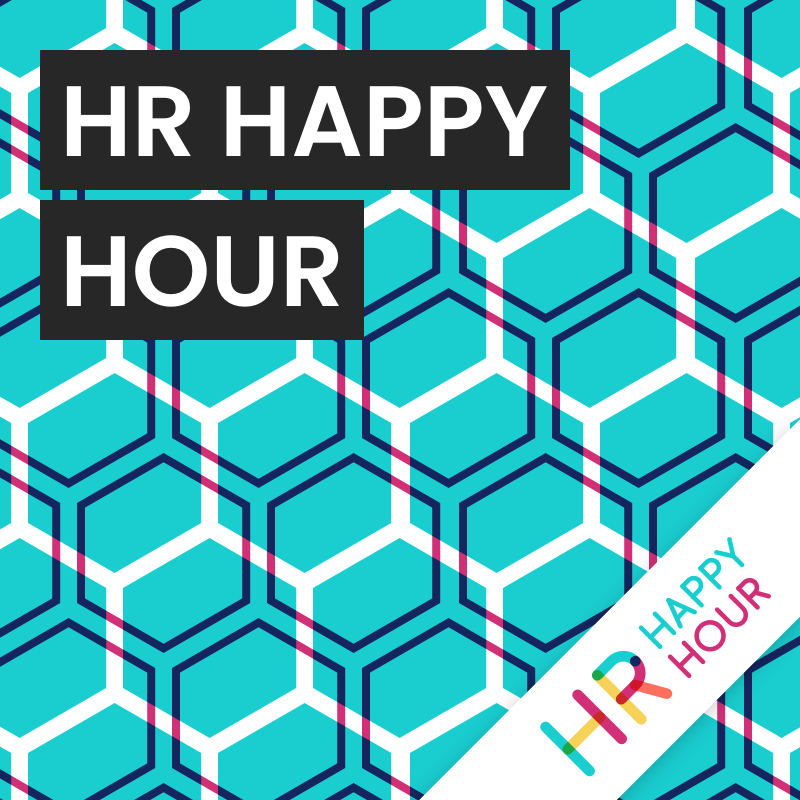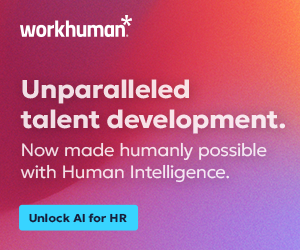LIVE from isolved Connect: When Product Innovation Promotes Connection
Hosted by

Karen Steed
Client Experience Director & Media Producer

Trish Steed
Co- Founder and Chief Strategy Officer, H3 HR Advisors
About this episode
LIVE from isolved Connect: When Product Innovation Promotes Connection
Hosts: Trish Steed, Karen Steed
Guests: Geoff Webb, VP of Product Marketing & Strategy and Kelli Rico, VP of Product Management & Training
This week, we met with Geoff Webb and Kelli Rico live from the isolved Connect Conference in Nashville, TN.
– Importance of data-driven decision making
– Considerations for the deskless workforce
– Accessibility within your organization
– Where does sustainability fit in?
Connect with Geoff Webb here
Connect with Kelli Rico here
Thank you for joining the show today! Remember to subscribe wherever you get your podcasts!
Transcript follows:
Steve 0:26
Hi everyone, this is Steve Boese. Recently, the HR Happy Hour and H3 HR Advisors team attended the isolved Connect conference in Nashville, Tennessee. At the event, we sat down with several isolved leaders and isolved customers to talk about some of the most important topics, issues and trends in the world of work, HCM, technology, and more. This episode is a part of that series recorded at the event. And we’re excited to share them with you. Thanks to our friends at isolved. And we hope you enjoy the show.
Trish 0:57
Welcome to the HR Happy Hour! You’re here with Trish and my special guest host, Karen Steed.
Karen Steed 1:02
It’s good to be back on it.
Trish 1:04
Right, we’re here at isolved Connect, and we have had a great day. So far, we’ve done some recordings with all different people. Right now we’re gonna have a few minutes with Geoff Webb, who is the VP of Product Marketing and Strategy here. And Kelli Rico, VP of Product Management and Training. Welcome to the show.
Geoff Webb 1:22
Oh, thank you.
Trish 1:24
Well, I thought before we get started, I know we’ve got a lot of area to cover with you both. We want to hear all about the product and all the innovations because I came here a year ago, I was thoroughly impressed, as Geoff knows, with a lot of that your clients were doing with the product. And so I know I’m sure in this year additional year of pandemic, you guys have been heads down doing this. Geoff, why don’t you tell us a little bit about yourself? Before we get started?
Geoff Webb 1:47
Yeah, thank you. So I’ve been with isolved a couple years now. And really my role is to lead a team of people very much focused on looking forward understanding the direction of the challenges that customers face, how they can best overcome them, and really sort of knitting together the technology and the services to drive that sort of innovation and feed that information into the world of Kelli, where she can actually build the very things that we’re gonna take to market.
Trish 2:10
Right and Kelli, how about you tell us a bit about yourself.
Kelli Rico 2:13
I’ve been with isolved for 10 years, started out as an implementation specialist, which I only bring that up because I like that I had the opportunity to learn in depth on the field, how the product works before I moved to the product.
Trish 2:25
That’s interesting. I mean, I’ve worked on the product side before myself and also in HR, what do you think was most valuable about doing it that direction? Because I don’t know a lot. A lot of people have that implementation experience. It’s a really different experience.
Kelli Rico 2:37
I think being on the floor and understanding the frustrations that the customers may have even frustrations that their employees bring to them helps give a different insight now when I’m building the product, because I’m trying to put that customer hat on, right, as we’re building a roadmap.
Trish 2:52
From day one, you know, one thing I thought they moved it now but you had a board, which was very interesting for anyone who’s just, you know, listening in that here, where your customers can actually come and sort of give their ideas of what they would like. Do you really use that? That’s what I really want to know.
Kelli Rico 3:06
We do. So we actually take information off the board, it’s a lot of work, we take all the information off the board and put it into our product tracker. And each year we give stats on how many of the ideas we actually brought to life.
Trish 3:17
So that’s a really interesting way to do it. Because I mean, I’ve talked to many vendors, I’ve worked for a vendor over the years. I don’t know anyone that’s doing it that way. Maybe they are but they I just have not seen that. So that’s really interesting. You really give your customers a voice and a much different more direct way than them having to maybe column with a complaint or make a ticket, right? A lot of times it’s more of a passive thing that customers come in and say, Oh, I wish it would do this, that or the other thing, right? So you all are just really just innovating in that way we do.
Geoff Webb 3:47
We put a lot of energy and effort into engaging with the customers and the network partners that we work with as well to drive the direction of the technology and services. It’s really the only way you can make sure you stay grounded, right, you don’t get obsessed about just building technology for its own sake. You’re really driving it towards that to Kelli’s point, solving the problems that customers face every day. So we engage with them here. We engage them out on roadshows, we engage them through the just regular meetings and advisory boards. And it’s incredibly healthy for an organization like us.
Trish 4:14
With the word Connect, we keep talking about this, Karen, where it makes such a difference, not just employee engagement, but to your customer engagement, right and how they feel part of it, versus just something that they’re buying that comes at them. That’s one directional. So I do feel like it’s really easy to so in terms of you know, the product itself, I’d like to geek out a little bit with you too short but here but could you maybe I don’t know who this goes to I’ll let you to decide who answers but you know, one of the things that is really impressive about the way that your products, you know really help your your customers is you build so much information into the product itself. So I know analytics, benchmarking. That’s a big sort of element of the product. Kelli, is that maybe more for you? Or is that more of a strategic question? Who wants to take?
Geoff Webb 5:08
I think we can both answer it. But I think it’s the kind of thing, you know, from my perspective for us, we firmly believe that, you know, as an organization, that HR teams that are very agile when they were, how they respond to challenges that are very data driven, are able to make much better decisions earlier. And you know, those things in service of delivering a really good employee experience, that’s a consistent theme that here was talked about all the time, that capacity to be data driven to unlock all of the power that HR teams have in all the information they gather, is something that’s really driving a lot of innovation in our platform right now. And there are predictive people analytics technology, which is this sort of modeling technology, as long as sort of looking for trend lines and analytics in the deep sorority, that is a huge part of what we’re going to be talking about tomorrow, when we actually do some, some future roadmap kind of things. But what we’ve actually been able to do now is to think about that 5 million, more than 5 million people that we have on the isolved people cloud platform. But having random amount of information that we can anonymize it, we can aggregate that, and then we can perform analytics on it, to really start to build meaningful benchmarks that are very, very much grounded in the reality of day to day, HR practice business practices around the US, and then deliver that directly through the platform, to customers, to HR teams, to their partners, so that they can make really good decisions based on real information. And that’s one of the things that we’re super excited about, we’re gonna be showing this, we’re gonna be driving this to the course of next year building in more analytics, more machine learning. So really shape the direction of how you use that information.
Trish 6:40
You know, and that’s, that’s really newer, I think, than people realize, because, again, I’ve been out of HR seven years now, as a practitioner, and even seven years ago, we did not have easy access to this. It was still big data, right? People are just talking about big data, but we didn’t know what to do with it. If I had it, then what you know, there were just a lot of what else? Maybe Kelli, can you talk a little bit about just that evolution in the last, say, decade of using data that you’re collecting?
Kelli Rico 7:10
Yeah, I mean, the data that you can get out of the system, I think naturally, like you said, you couldn’t find that information anywhere, right? Salary.com was not a big thing. Now you can go on, but you have to buy into all of that stuff with the isolved platform, having all of that data right at the fingertips, I mean, things like benefit costs, how much you’re paying somebody based on their location, and the job that they’re doing will help make sure that HR leaders have the opportunity to hire the best candidates.
Trish 7:39
Probably not also, just from a hiring perspective, but even from pay equity as your any week. Correct, right and an ongoing basis. Right? Are they able to sort of slice and dice that in a way where they can see other industries or their industry? Maybe talk a little bit about how, how do they visualize that once their customer?
Kelli Rico 7:59
Absolutely. So within the predictive people analytics platform, you can do in any type of graph that you want bar graphs, chart graphs, but they can slice and dice it based on industries and locations. So you know, in our demo that we’re going to do tomorrow, we’re looking at, I think, iron workers in Iowa. So you can drill specifically down to a position that an employee holds and the location.
Trish 8:20
That’s cool, have you ever seen anything like it?
Geoff Webb 8:26
One of the nice things about the way that the people cloud is built, as well, as you know, we’re kept gathering information from even before someone’s hired or during just that basic interview process. We connect all those pieces together. And so you have a single sort of golden thread of the employee that runs through every single module from from hiring, onboarding, benefits, payroll, HR, engagement, management, collaboration tools, so that as we we can use that information, it’s a bubble up insights through that predictive analytics modules. So that you can really see like, what not only to your point, how do I find and bring people on board? But how do I engage them, but how do I retain them? How do I develop them and what’s working for my organization compared to say, other similar organizations around the US or in my area, that that capacity to unlock that it’s something we think is really new. And it’s really, really transformational when you think about HR taking a strategic role in the business?
Karen Steed 9:19
Well, it’s great to hear that you’re using all this data for good, and really using that in the roadmap to see where that’s going to take us. So, what’s coming out in the future? So what are like the big things you’re focusing on, in the next year or so?
Kelli Rico 9:34
A lot of the bigger things that we’re focusing on outside of the benchmark analytics, we’re just about to launch our total compensation, which does tie a little bit into the predictive people analytics but having employees have access to the total comp statement is critical, I think and making sure that they know how valuable they are and you know what the company is actually giving to them. Outside of total comp, we’ve also just put record with rapid or the on demand pay. So we know, you know, not like James said in his keynote today, a lot of employees don’t have bank accounts, which seems crazy, but a lot of them don’t. And this will give them that opportunity to get the on demand pay right when they need it.
Trish 10:15
Yeah, it’s interesting. You mentioned that because I think, you know, the numbers vary, but it’s as high as 80% of the workforce is dustless. Right. And so a large number of them may or may not have, you know, I mean, a bank account or payroll. So, I think that’s certainly something that’s going to benefit those employees, if that’s sort of the manufacturing maybe, or retail or whatever industry you’re in, if you have a high population, people who really and they don’t want a bank, they just want an account where their pagans have access to that. You mentioned total compensation. So this is what I find fascinating. I feel like, you know, for the last probably 20 years, we’ve been wanting to give employees this information, I’ve certainly sat there in a Word document or an Access database, trying to create something right to, to give them I’d be embarrassed to show you what I created over the years, or what other HR professionals like. So I want maybe both of you to touch a little bit on sure you’re doing things that are innovative, right, like brand new, never been thought of maybe talk a little bit about what are some of those things like like that, where it’s it’s maybe been an issue that HR professionals have been sort of solving on paper for a long time. But it really is still equally important to have on your roadmap. Right? So can we maybe first what, what do you think your your customers are sort of doing to drive that with you? Things that are truly just out of the box innovative never been done? versus something like that, where it’s just really helpful to them to have someone do that for them?
Kelli Rico 11:46
Yeah, I think a lot of the smaller things that we’ve released and smaller things can actually be bigger things are helping our customers seems like our expense management tool. I know when we talk through expense has been around for a long time. But being able to automate that so that the HR team is not helping collect receipts, scanning them and right on manually reimbursing their employees, I think is definitely a key piece that we’ve rolled out.
Trish 12:11
And Geoff, what about like, just strategically, as you’re thinking? Are there any, I don’t know is that a thought that you have, when you’re thinking about like, we go back through some of the old ways that people do things just to really try and transform that?
Geoff Webb 12:24
We do. In fact, I think, you know, we are often balancing and this is something that that Kelli has genius really played into is our ability to balance that the sort of the the major innovation pieces with the coal process and just improving those pieces, so that we’re adding and enriching the functionality to remove the kind of the friction and the pain of HR process. I also think, a couple of areas where I know who’s very focused, making things accessible, making it easy to get access to the kind of the fabric of HR in your business. So I think about some of the more innovative things around the sort of natural language processing ability of the platform where you can talk to the platform and habit do things for you, we see a lot of opportunity to there are things like Benefits Administration, onboarding, checking your benefit statement, understanding where you stand, just making that easy to your point when people are out on the road, doing that from a phone with a very simple set of questions when you can speak or typing. I think the other area that for me is really interesting.
Geoff Webb 13:19
And I think it’s making a big difference for our customers is increasingly as we we mesh and we sort of meld the software part of our business with the HR augmentation services piece as well. Because one of the things that we do as a business is we also work very closely to bring expertise on tap and on demand, to the customers that we work with, as we think about how you bring to the technology and services together to sort of focus on particular sets of business challenges. That’s really, really interesting. And while it’s not, it doesn’t drive necessarily technology innovation, it does change the way that people think about interacting with us as a business and how they started trying to solve problems. And you know, we talked to organizations who were, I was going to have to hire five people, actually, now, I don’t need to hire that many people to do this, my current people will actually be able to do less of their time spend less time on sort of, you know, the basic operational functions more time on strategy. We’ve got you guys on tap to answer difficult questions. It helps them grow in their career, it helps my business be more efficient and more productive. And we just could engage more deeply. And I think that’s really, really fascinating change for us over the last year or so really will drive that in the future.
Trish 14:25
Probably also helps, I think, but the great resignation where people are just finding it hard to follow some of the rules. Yep, meeting them that should at least alleviate a little bit of that pressure. Well, I know, my last question is going to be around sustainability. I mean, you’ve hit on accessibility. So thank you for hitting on that. Because I think that’s, that’s something that a lot of the vendors we heard from are not really focused on. We actually just did some recent research. We’re gonna have a report coming out shortly. It’s gonna be featured on leash around how organizations are really having a much better focus on accessibility at the time. algae have you bought? And the other one we hear a lot is sustainability? Is that something that’s starting to kind of? Or maybe it’s already been a part of your thought processes around how you design the product, how your customers are using your product?
Geoff Webb 15:15
Yeah, I think for us, you know, the capacity to deliver as a cloud service makes it very much easier to maintain to deliver your there’s a lot of the sort of benefits on Cloud, which you’re aggregating delivery of services, it ultimately makes it more efficient to do so. Right. So I think for us, we’ve always been very focused on how can we make this an efficient delivery, which ultimately makes it easier for everybody to live with and that you have a sustainability game.
Trish 15:39
Absolutely. Well, thank you so much. We’re so glad that you were able to take some time out of your your busy schedule here. I know you’ve you’ve got a session coming up. Is that right?
Geoff Webb 15:49
Oh, yeah. Right now. Right now.
Trish 15:50
All right. Well, good. Well, I wish everyone could be here for that. But since you can’t thank you for sharing a little bit. Where can they go to find out more information about what you’re both doing to design?
Geoff Webb 16:02
A cool website isolvedhcm.com is absolutely a great place to start. You’ll find a huge bit of information that also frankly, come to isolved connect. We’d love to see you here.
Trish 16:11
Definitely come back. And then for both of you, Jeff and Kelli that people connect on LinkedIn is also if they want to connect with you. All right, very good. Well, we will share that in the show notes. Thank you so much for being on the show. Thank you for another great interview.
Karen Steed 16:26
It was great. I’ve learned so much. Thank you!
Transcribed by https://otter.ai
Talk to us
If you want to know more about any aspect of HR Happy Hour Media Network, or if you want to find out more about a show topic, then get in touch.









